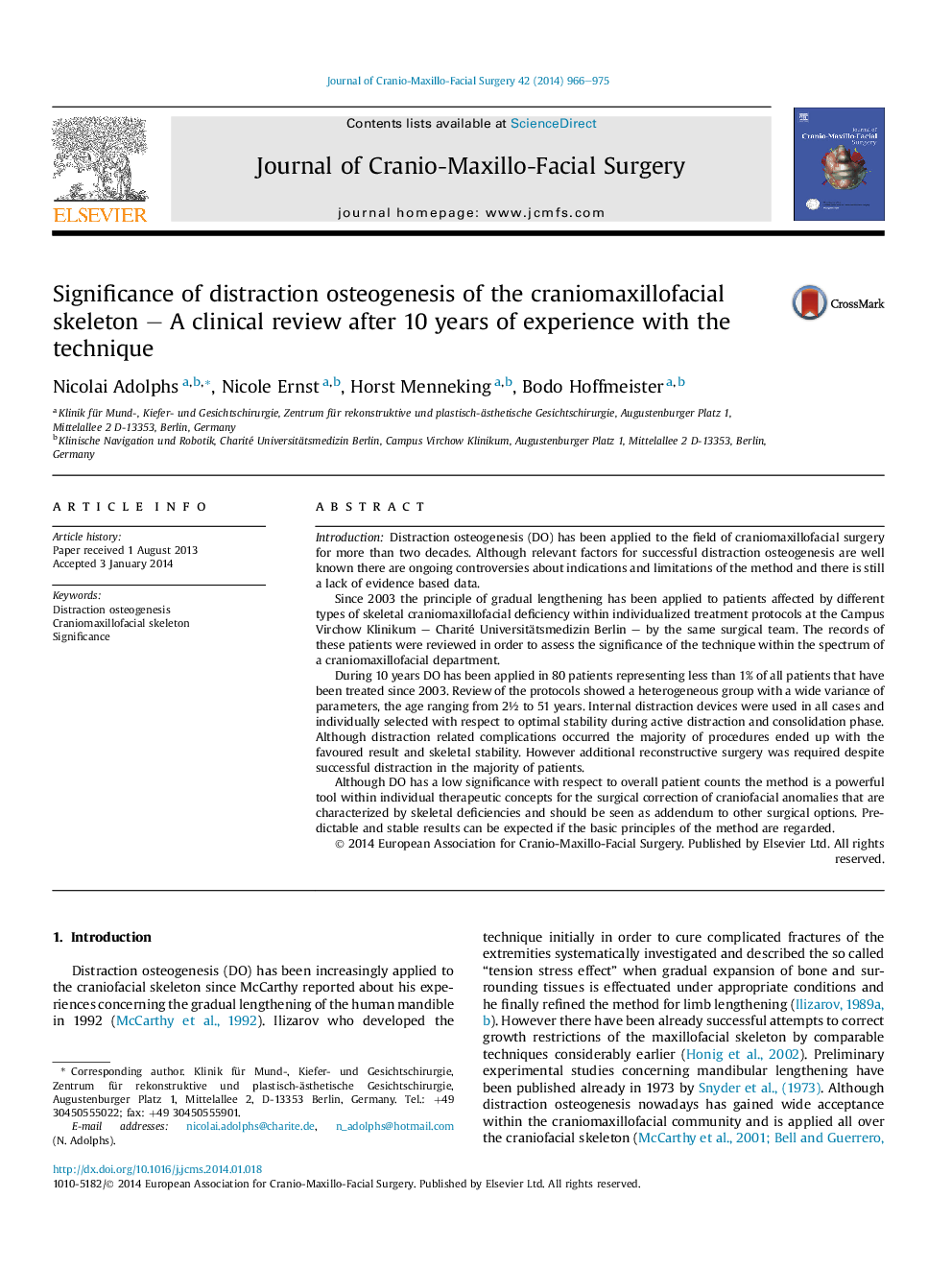| کد مقاله | کد نشریه | سال انتشار | مقاله انگلیسی | نسخه تمام متن |
|---|---|---|---|---|
| 3143323 | 1196813 | 2014 | 10 صفحه PDF | دانلود رایگان |

IntroductionDistraction osteogenesis (DO) has been applied to the field of craniomaxillofacial surgery for more than two decades. Although relevant factors for successful distraction osteogenesis are well known there are ongoing controversies about indications and limitations of the method and there is still a lack of evidence based data.Since 2003 the principle of gradual lengthening has been applied to patients affected by different types of skeletal craniomaxillofacial deficiency within individualized treatment protocols at the Campus Virchow Klinikum – Charité Universitätsmedizin Berlin – by the same surgical team. The records of these patients were reviewed in order to assess the significance of the technique within the spectrum of a craniomaxillofacial department.During 10 years DO has been applied in 80 patients representing less than 1% of all patients that have been treated since 2003. Review of the protocols showed a heterogeneous group with a wide variance of parameters, the age ranging from 2½ to 51 years. Internal distraction devices were used in all cases and individually selected with respect to optimal stability during active distraction and consolidation phase. Although distraction related complications occurred the majority of procedures ended up with the favoured result and skeletal stability. However additional reconstructive surgery was required despite successful distraction in the majority of patients.Although DO has a low significance with respect to overall patient counts the method is a powerful tool within individual therapeutic concepts for the surgical correction of craniofacial anomalies that are characterized by skeletal deficiencies and should be seen as addendum to other surgical options. Predictable and stable results can be expected if the basic principles of the method are regarded.
Journal: Journal of Cranio-Maxillofacial Surgery - Volume 42, Issue 6, September 2014, Pages 966–975